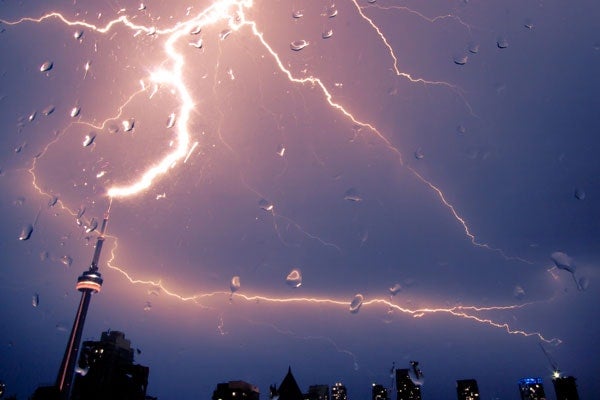The ferocity of hurricanes is a phenomenon that has become increasingly alarming in the context of global warming. With climate change exacerbating weather patterns, understanding the interplay between rising temperatures and storm intensity is more crucial than ever. This discourse will delve into the intricate dynamics of hurricanes, elucidate the mechanisms by which global warming intensifies these storms, and explore the myriad consequences associated with their escalation.
Initially, it is paramount to comprehend what constitutes a hurricane. Typically classified as a tropical cyclone, a hurricane derives its energy from warm ocean waters. The principal ingredients for hurricane formation include atmospheric moisture, warm ocean waters, and wind patterns conducive to cyclonic movement. However, as global temperatures rise, these elemental factors are drastically affected.
One of the most significant contributors to the intensification of hurricanes is ocean temperature. Studies indicate that the oceans have absorbed over 90% of the excess heat generated by greenhouse gas emissions. Warmer waters provide a fertile ground for hurricanes to develop. This increase in sea surface temperatures leads to more moisture evaporating, which subsequently fuels storm formation. Thus, the warmer the ocean, the more potent the hurricane can become, potentially leading to more catastrophic weather events.
The duration of hurricanes has also evolved due to climate change. Historically, storms might have gained strength quickly and then dissipated within a week. However, recent trends reveal that storms are maintaining their intensity for longer durations. This extension means that areas impacted by hurricanes experience not only heightened wind speeds but also prolonged periods of heavy rainfall and associated flooding. The phenomenon of “stalling,” where hurricanes linger over a specific region, can result in devastating inundation, compounding the destruction wrought by high-speed winds.
The National Oceanic and Atmospheric Administration (NOAA) has projected that hurricanes will become more intense in the coming decades. Their predictions suggest that the number of storms reaching categories four and five—those with winds exceeding 130 mph—will increase. This statistical amplification correlates with rising global temperatures, which warm the atmosphere in conjunction with ocean heat. As a result, the destructive potential of hurricanes is set to escalate, leading to increased incidents of infrastructure damage, loss of life, and economic downturn in affected regions.
Another critical dimension is the relationship between hurricanes and atmospheric circulation patterns. Changes in the jet stream—largely influenced by alterations in global temperatures—have been shown to affect storm paths and behaviors. Disrupted patterns can either steer storms towards densely populated areas or render them erratic, complicating prediction models. This unpredictability poses substantial challenges for emergency preparedness and response, leaving vulnerable populations at an increased risk.
While the focus often falls on the immediate impact of hurricane winds and surge, it is essential to address the long-term consequences of intensified storms. Hurricane aftermath extends far beyond the storm’s physical destruction. Communities are often faced with the arduous task of rebuilding, which is coupled with psychological impacts such as trauma and displacement. Economic repercussions can be long-lived, with entire industries—including tourism and fishing—experiencing profound disruptions.
The interplay between hurricanes and environmental degradation also warrants attention. Ecosystems such as mangroves and wetlands, which act as natural buffers against storm surges, are increasingly threatened by rising sea levels and habitat loss. The catastrophic power of hurricanes can obliterate these vital ecosystems, undermining their ability to serve as protective barriers. The devastation of natural environments not only exacerbates the effects of storms but also diminishes biodiversity, creating a vicious cycle that further impacts climate resilience.
Adaptation and mitigation strategies are indispensable in addressing the intensifying threat of hurricanes exacerbated by climate change. Communities need to enhance their resilience by implementing improved infrastructure designs, such as elevated buildings and improved drainage systems. Investing in green spaces can also provide natural storm protection, as vegetation can absorb excess rainfall and reduce runoff.
Moreover, the urgency for policymakers to engage in comprehensive climate action cannot be overstated. Both mitigation of greenhouse gas emissions and investment in climate adaptation measures are critical to combative hurricane escalation. The international community must cooperate to establish stringent policies aimed at reducing carbon footprints and transitioning to renewable energy sources. It is no longer a question of if we experience stronger hurricanes, but rather when and where they will strike next, with increasingly dangerous consequences.
The implications of storms driven to ferocity by global warming extend well beyond meteorological phenomena. The escalating intensity of hurricanes underscores a broader existential crisis driven by climate change—a plight not only for coastal communities or developing nations but for humanity as a whole. As stewards of our planet, it is incumbent upon us to confront this impending calamity with vigor and resolve.
To conclude, the threat posed by hurricanes in the context of global warming is multilayered and complex. From their formation dynamics to long-term societal impacts, storms are evolving in ways that necessitate swift and decisive action. Understanding these changes and their cascading effects is crucial for fostering resilience and seeking solutions that address the root causes of climate change. The call to action is clear; a concerted global effort is required to mitigate the devastation wrought by hurricanes unleashed by an increasingly warm world.








